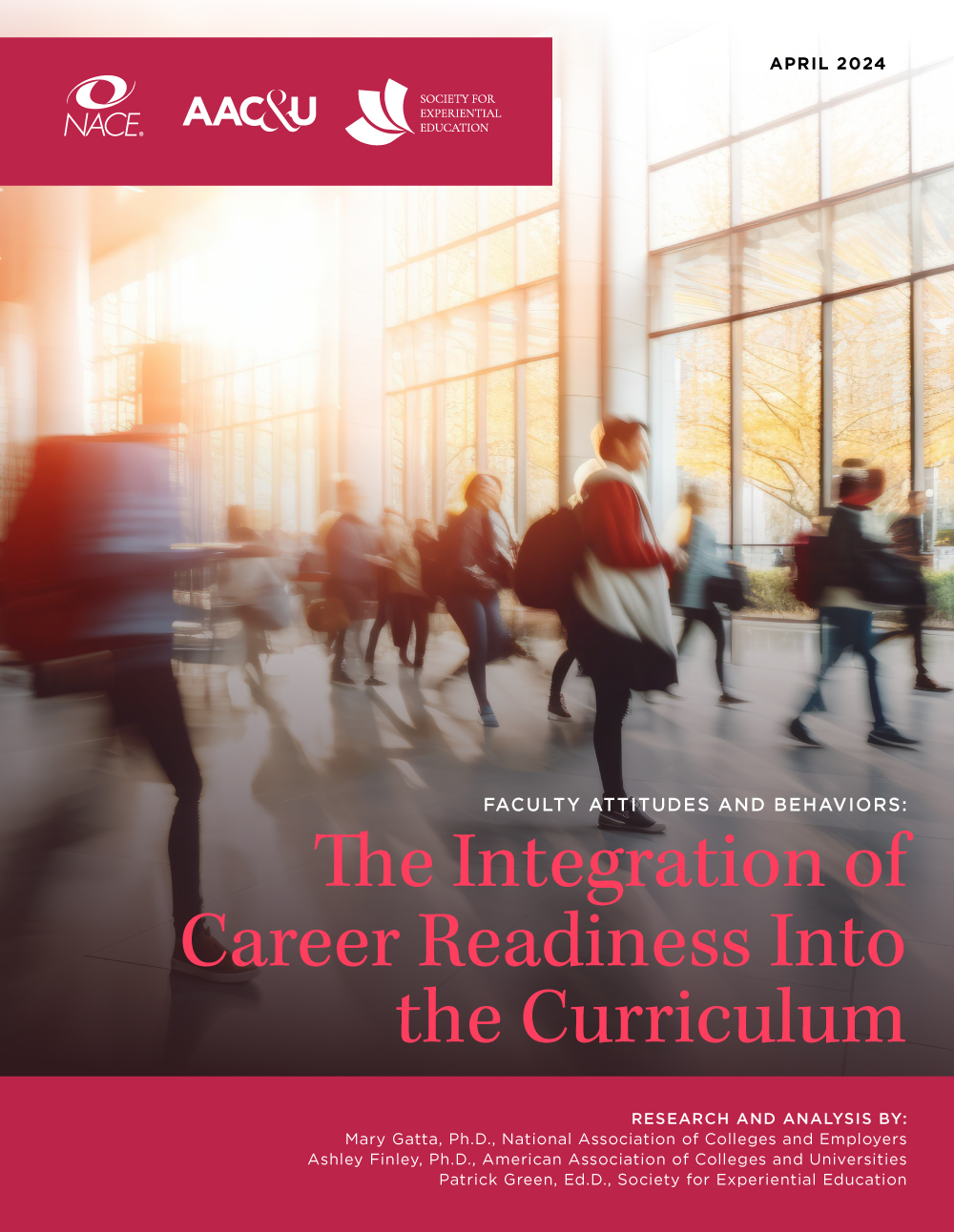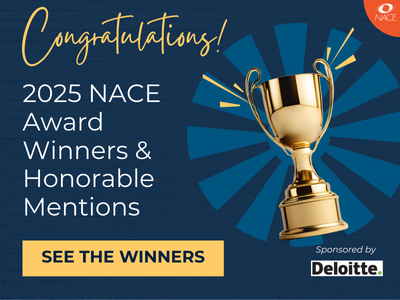Many academic departments throughout higher education feel under siege in the current climate of declining enrollments, says Paige Tan, Ph.D., professor of political science at Radford University. The NACE Career Readiness Competencies can be a valuable tool to help faculty members demonstrate to administrators, students, and parents that what they do creates long-term value for students.
“I'm in political science. There is a lot of popular misunderstanding that our field is just for people who want to work on Capitol Hill or is just for aspiring lawyers,” Dr. Tan notes.
“The NACE Career Readiness Competencies help me to demonstrate the applicability of the skills I teach in my courses for a wide array of jobs in the public, non-profit, and private sectors. I host our poli sci alums out in the workforce to speak to students in my careers class. They echo the language of the career readiness competencies because the competencies are exactly what they're looking for in people they hire.”
The career readiness competencies can be an effective tool in faculty’s work with students, especially when helping them to understand why they need certain courses in general or a set of courses for their major.
“Students follow the plans we set out for them, but rarely do they understand the why of it all. Using the career readiness competencies can help to show students that a wide array of classes can help build up the skills employers are seeking. Vitally, it can also help students understand how to showcase and sell their skills to potential employers in the future,” Dr. Tan explains.
She found strong evidence of the competencies’ positive impact on a course evaluation this past semester when a student wrote, “[M]ost classes make you more qualified to do a job, but this class made me feel more qualified to get a job.”
“Part of the reason for the student's new confidence was that they are now able to understand and sell their skills, many stemming from the career readiness competencies,” Dr. Tan says.
She continues that universities, themselves, can benefit from implementation of competencies, especially in the current climate in which institutions are being challenged by developments such as political polarization, declining enrollments, questioning of the value of a college degree, technological change, and more.
“A focus on the NACE Career Readiness Competencies shows students, parents, and employers that universities have their eyes on the ball,” she says.
“They are getting students the professional skills employers are looking for. Like it or not, parents are very career-focused for their children. I'm an academic, but my son is going to college in fall 2024, and I've already had a conversation with faculty at his chosen university about career options for his math major, particularly in light of the rapid development of artificial intelligence.”
One of the major issues hampering faculty implementation of career readiness competencies is simply that faculty don’t know about them.
“Faculty may work hard to develop students’ written and oral communication skills along with critical thinking and problem solving and not realize that these are part of the career readiness competencies,” Dr. Tan points out.
“I think the career readiness competencies have well-penetrated administrators, along with the communities of faculty and professionals associated with careers and pedagogy. The question is how to reach faculty who don't intersect with those groups.”
In addition to lack of awareness, some faculty see their roles as scholars as different from “vocational education.”
“I have in the past faced pushback against my career initiatives from departmental colleagues with this mindset,” she says.
To overcome these obstacles, career services offices can teach the community about the many different ways to use the career readiness competencies on campus. Dr. Tan suggests that on the low-investment end, career services can give presentations about them at Panhellenic events or in first-year dorms.
“On the high-investment end,” she continues, “the career readiness competencies could be embedded in general education or major/minor programs. Then, there's everything in between.”
Dr. Tan recommends that, at a minimum, the goal of this initiative should be for every graduating student to:
- Understand the career readiness competencies;
- Know where they are in their development of those competencies;
- Learn how to build connections between their experiences and the skills they developed (see University of North Carolina Wilmington’s Skill Seeker resource); and
- Know how to showcase their competencies with examples for potential employers and graduate schools.
It is essential to get faculty involved. Dr. Tan suggests that career services builds partnerships with faculty in every department or college, if possible. She points to the effort at UNC Wilmington, where she worked previously, to involve faculty in international programming. The international office there built an international advisory board with one faculty member from each department.
“Faculty got credit for service for participating. Faculty could give input on international programming and also served as a conduit of information from the international office to faculty colleagues and students. This built a dense and passionate community surrounding international initiatives on campus,” Dr. Tan explains.
The model is effective as faculty are sources of support and ideas for career services as well as channels for career services to get information to students. A mass e-mail from career services about a job fair is less likely to receive attention from students than a personal nudge or extra credit from a faculty member in class, Dr. Tan says.
“Career services can offer faculty training so they can be better career advocates. The Radford University Center for Career and Talent Development, under its dynamic new leader, Lee Svete, includes me in the campus’ NACE membership,” she says.
“I'll be attending the virtual conference this summer, which helps me to build skills that are valuable to my poli sci students. Our careers office is asked to do too much with too few staff members. Bring faculty in, give us training, share information on all the latest in the career field. We love to learn—it's kind of our main thing. Not every faculty member will do it, but some will. Reach out and make those partnerships everywhere on campus.”
How Does This Course Help You to Get Career Ready?
Dr. Tan uses the NACE Career Readiness Competencies in her syllabi for POSC 354 to show students how what they do builds their career readiness.
The National Association of Colleges and Employers (NACE) has a set of career readiness competencies college students should aspire to. Let's take a look at these competencies and see how we'll work to develop them in POSC 354: Ethics in International Affairs.
| Competency | How We Develop That Competency in POSC 354 |
|---|---|
| Teamwork | You'll work in a team to do your semester-long Wicked Festival project. We'll work on some skills to improve your teamwork mojo along the way. You'll evaluate your teammate's contribution, and they'll evaluate you. |
| Critical thinking | We're going to be doing critical thinking every day in class. We'll think critically about how to solve ethical dilemmas and analyze how others have done so. |
| Career and self-development | We will consider a career track that builds on ethics: corporate social responsibility. In addition, we'll discuss many international relations issues that have attendant career possibilities: international aid, humanitarian relief/intervention, counter-terror, war and conflict. |
| Equity and inclusion | You can practice inclusion every time you form a small group for discussion in this class. Consider including someone new, maybe even someone who thinks differently or looks differently from you. |
| Communication | We'll work on lots of different types of communication: (oral) small-group, full class, Wicked Festival presentation, in-class presentation; (written) you'll also write papers, improving your written communication. |
| Leadership | You can be a leader in class, helping us to be brave in confronting the thorny ethical dilemmas in this class in a way that lifts everyone in class up. You can show leadership in how you approach your project group. Can you help organize the troops to achieve your goal? |
| Professionalism | You are asked to dress and behave professionally at the Wicked Festival. It is a major professional development opportunity. |
Faculty Attitudes and Behaviors: The Integration of Career Readiness Into the Curriculum is available on the NACE website.
The study on which the report is based was conducted October 18 through December 31, 2023. Overall, there were 6,880 usable responses, representing four- and two-year faculty members at both public and private institutions and across a range of disciplines.
DOWNLOAD NOW








